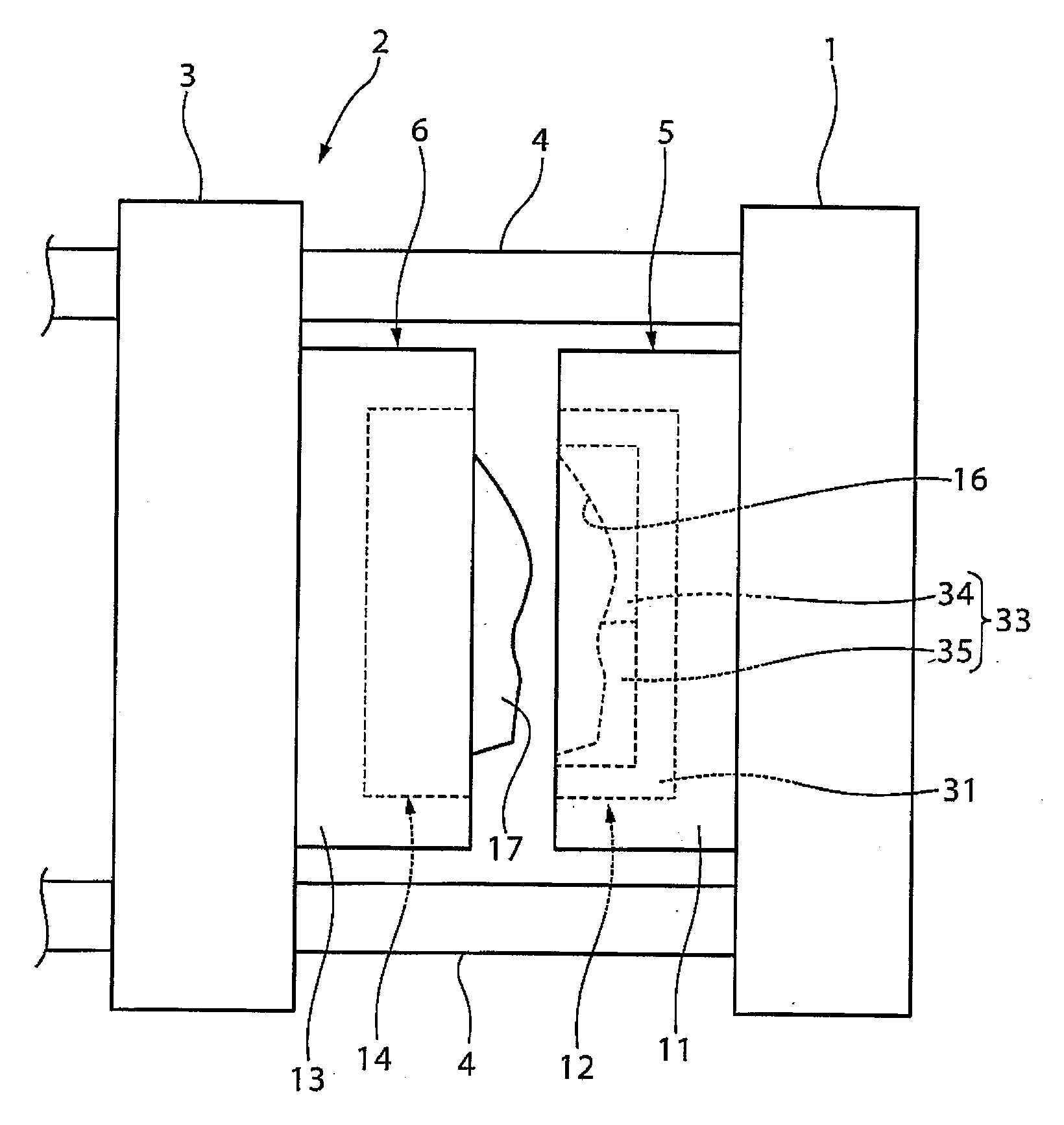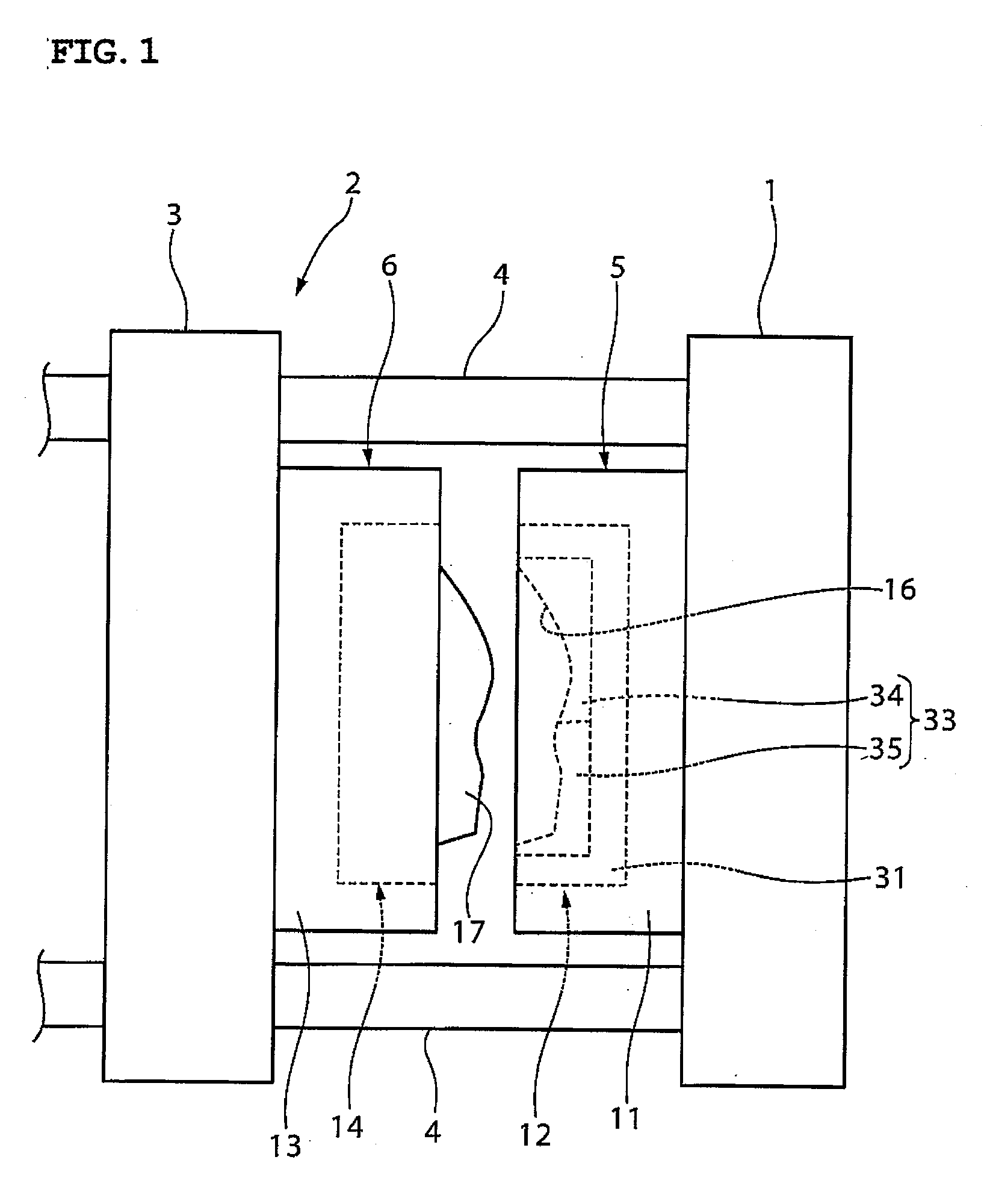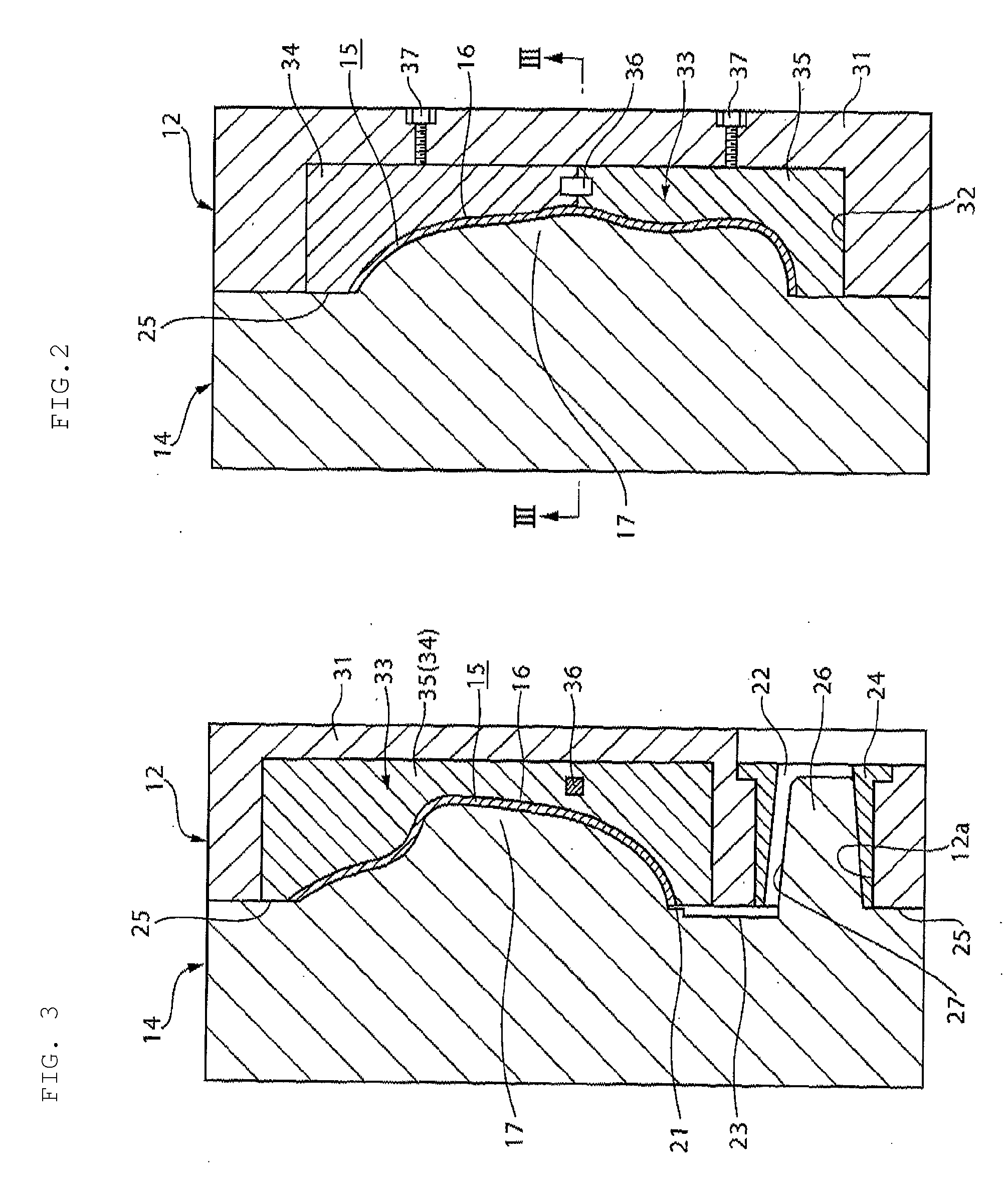Die casting mold and method of manufacturing and casting the same
a technology of die casting and molds, applied in the field of die casting molds, can solve the problems of lattice-patterned cracks on the inner surface of lattice-patterned cracks, heat checks, and surface defects of cast products, and achieve the effects of reducing preventing the occurrence of heat checks, and facilitating the repair of inserts
- Summary
- Abstract
- Description
- Claims
- Application Information
AI Technical Summary
Benefits of technology
Problems solved by technology
Method used
Image
Examples
Embodiment Construction
[0034]Preferred embodiments of a die casting mold according to the present invention and a preferred method of manufacturing the same will be described below in detail with reference to FIG. 1 to FIG. 7.
[0035]In the figures, reference numerals 1, 3, and 4 denote a fixed platen, a movable platen, and tie bars of a die casting machine 2, respectively. The fixed platen 1 is fixed to a base (not shown) of the die casting machine 2. The movable platen 3 is designed to move by a drive unit (not shown) on the base in the horizontal direction parallel to the tie bars 4.
[0036]A fixed mold 5, or the die casting mold according to the various preferred embodiments of the present invention, is assembled to the fixed platen 1. A movable mold 6, which may be clamped to the fixed mold 5, is assembled to the movable platen 3. In FIG. 1 to FIG. 5, an extrusion pin provided on the movable mold 6, a drive unit for the extrusion pin, cooling water passages provided on both of the molds 5 and 6, a mold c...
PUM
| Property | Measurement | Unit |
|---|---|---|
| thickness | aaaaa | aaaaa |
| hardness | aaaaa | aaaaa |
| toughness | aaaaa | aaaaa |
Abstract
Description
Claims
Application Information
 Login to View More
Login to View More - R&D
- Intellectual Property
- Life Sciences
- Materials
- Tech Scout
- Unparalleled Data Quality
- Higher Quality Content
- 60% Fewer Hallucinations
Browse by: Latest US Patents, China's latest patents, Technical Efficacy Thesaurus, Application Domain, Technology Topic, Popular Technical Reports.
© 2025 PatSnap. All rights reserved.Legal|Privacy policy|Modern Slavery Act Transparency Statement|Sitemap|About US| Contact US: help@patsnap.com



